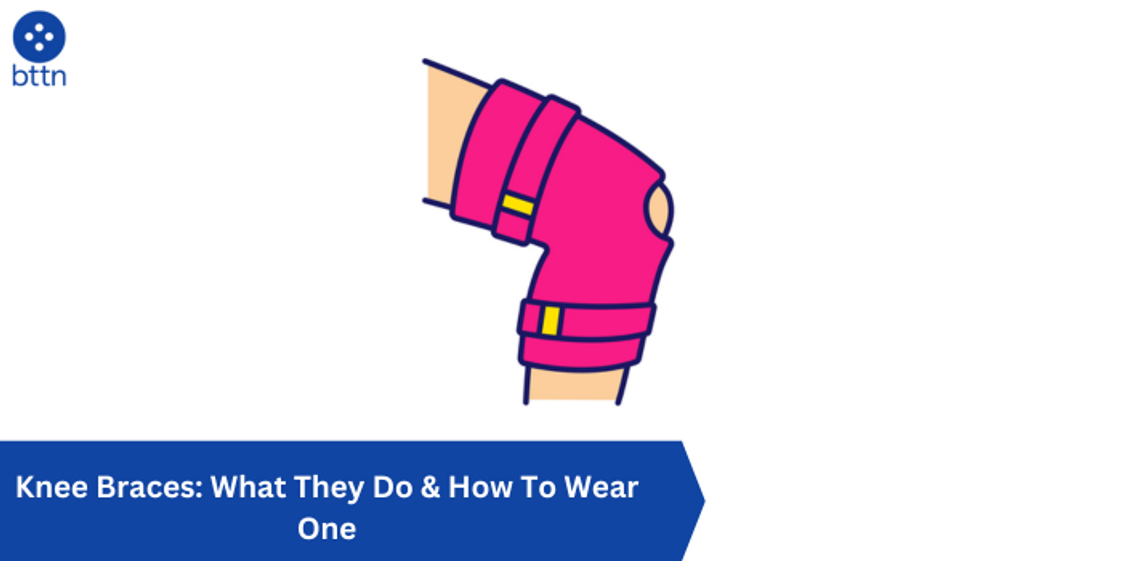
Knee Braces: What They Do & How To Wear One
Posted by Pankaj Dhiman on Oct 21st 2024
In the realm of orthopedic supports, knee braces stand out as one of the most commonly used devices. Whether you’re an athlete recovering from an injury or someone dealing with chronic knee pain, understanding what knee braces do and how to wear them correctly is crucial for their effectiveness. Let’s delve into the details of knee braces—how they work, their benefits, and the best practices for wearing them.
What Are Knee Braces?
Knee braces are supportive devices designed to provide stability, compression, and protection to the knee joint. They come in various types, including sleeves, wraps, and hinged braces, each catering to different needs. Knee braces are used for various purposes:
- Injury Recovery: Many athletes use knee braces to recover from injuries such as ligament tears (like ACL or MCL injuries) or meniscus tears. Braces can help stabilize the knee during rehabilitation.
- Preventive Support: Some individuals wear knee braces to prevent injuries during sports activities, especially if they have a history of knee problems.
- Osteoarthritis Relief: People with osteoarthritis may use knee braces to reduce pain and improve mobility by providing support and reducing strain on the joint.
Shop Now: Mueller HG80 Knee Brace
How Do Knee Braces Work?
The way knee braces work depends on their design and purpose:
- Compression: Most knee braces provide compression, which helps reduce swelling and inflammation by increasing blood flow to the area.
- Stability: Braces with hinges or rigid supports can stabilize the knee joint, limiting its range of motion and preventing excessive movements that could cause further injury.
- Alignment: Some braces are designed to correct alignment issues, such as patellar tracking braces that help keep the kneecap in its proper position.
Shop Now: BSN Medical Jobst Opaque Compression Hose, 30-40 mmHG, Closed Toe, Knee High
Types of Knee Braces
Understanding the different types of knee braces can help you choose the right one for your needs:
- Prophylactic Braces: These are preventive braces often worn by athletes to reduce the risk of injury during high-impact sports.
- Functional Braces: Designed for use after injury, these braces provide support to a weakened or injured knee joint.
- Unloader/Offloader Braces: Specifically crafted for individuals with conditions like osteoarthritis, these braces shift weight away from the affected part of the knee.
- Rehabilitative Braces: These are used post-surgery or during rehabilitation to limit movement and protect the knee during healing.
Shop Now: Compass Health Cybertech Back Braces
How to Wear a Knee Brace Correctly
Wearing a knee brace properly maximizes its benefits. Here’s a step-by-step guide:
- Choose the Right Size: Ensure the brace fits snugly but not too tight. Refer to the manufacturer's sizing guide for accuracy.
- Positioning: Slide the brace up your leg, aligning it with your kneecap. If it's a wrap-around or strap-on brace, adjust the straps for a comfortable fit.
- Secure Fit: Fasten any straps or closures securely, making sure the brace doesn’t slip or move excessively.
- Range of Motion: Test your knee's range of motion while wearing the brace. It should feel supported but not restricted.
- Activity Level: Follow your healthcare provider's or therapist's advice on when and for how long to wear the brace, especially during physical activities.
Shop Now: Cardinal Health T.E.D. Knee Length Anti-Embolism Stockings, Acute Care
The Bottom Line
Knee braces can be valuable tools in managing knee injuries and conditions, but they are most effective when used correctly and as part of a comprehensive treatment plan. Consult with a healthcare professional to determine if a knee brace is right for you and to get guidance on selecting and using one.
Remember, knee braces are just one aspect of knee care. Maintaining a healthy weight, doing appropriate exercises, and avoiding risky activities can also contribute to knee health.
FAQs
Q: How tight should a knee brace be?
A: A knee brace should be snug but not overly tight. It should provide support without cutting off circulation.
Q: Can I wear a knee brace all day?
A: It depends on the type of brace and your specific condition. Follow your healthcare provider's advice on wearing schedules.
Q: Where is the best place to buy knee braces?
A: The best place to buy knee braces is from reputable medical supply stores or trusted online retailers like bttn.
In conclusion, knee braces serve a vital role in managing knee injuries and conditions. By understanding their functions and using them correctly, you can optimize their benefits and support your knee health effectively.
This blog post aims to provide comprehensive information on knee braces, from their functions and benefits to practical tips on wearing them correctly. If you have any specific questions or concerns about knee braces, feel free to reach out or consult a healthcare professional for personalized advice.
